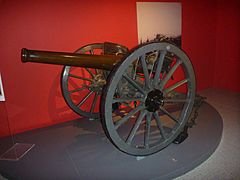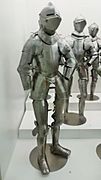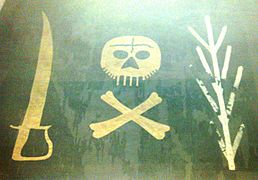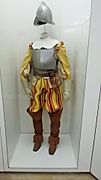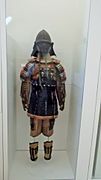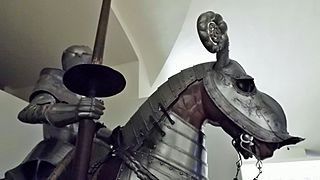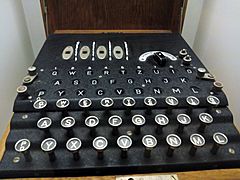Museum of the Army (Toledo) facts for kids
| Museo del Ejército | |
 |
|
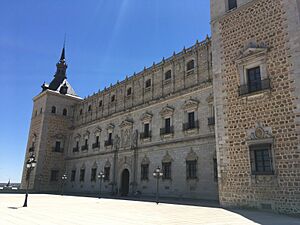 |
|
| Established | 2010 on present site |
|---|---|
| Location | Toledo, Spain |
| Owner | General State Administration |
| Public transit access | Toledo railway station |
The Museum of the Army (in Spanish, Museo del Ejército) is a special place in Toledo, Spain. It's all about the history of the Spanish Army. This museum is one of Spain's National Museums. It works closely with the country's Ministry of Defence.
The museum's collection used to be in Madrid. But in 2010, it moved to its current home in Toledo. The museum is made up of two buildings. One is the very old Alcázar (a historic castle). The other is a new building built just for the museum.
Contents
A Look at the Museum's History
The idea for this museum started way back in 1803. That's when the royal military museum first opened in Madrid. It was in a building called the Palacio de Monteleón. This building was also used as a place for soldiers to live.
In 1808, French forces attacked and looted the building. This happened during an event known as the Dos de Mayo Uprising. The museum was later set up again. In 1827, it was split into two parts. But later, all the collections were brought back together. They were kept in a grand hall called the Hall of Realms.
Moving to Toledo
In the 21st century, the museum's collections moved from Madrid to Toledo. The new location offered much more space. The choice of the Alcázar as the new home was interesting. This is because the castle has a strong connection to the Siege of the Alcázar. This was an important event during the Spanish Civil War.
During that war, a group of soldiers held the castle. After the war, the castle's ruins became a symbol of victory for one side. Even with this history, the museum's new displays were very popular. The new museum officially opened in 2010. It was opened by Felipe, who was then the Prince of Asturias.
Exploring the Alcázar Building
The historic Alcázar building is where you'll find the museum's main collection. This is called the Permanent Exhibition. Some rooms show the history of Spain and its Army in order of time. Other rooms focus on specific themes or types of items. It's a great way to see how Spain's past connects with its military.
What's in the New Building?
The new building is very modern. It holds many important parts of the museum. Here you'll find the offices where the museum is run. There's also a room for special, temporary exhibitions. You can also see a section about the Army today.
The new building has a classroom for learning activities. There's an auditorium for talks and events. It also has an archive and a library. If you get hungry, there's a coffee shop. Plus, there are workshops to fix old items and large storage areas. All these areas use the latest technology. This helps to keep the museum's items safe and helps people learn about them.
Amazing Archaeological Finds
Some of the items in the museum are very old. They are called archaeological finds. These items were discovered during digs at the Alcázar. The digs happened before the new museum building was constructed. These finds help us learn about the very early history of the area.
Special Items and Displays
The museum has many interesting display cases. Some of these cases are beautiful themselves. They have decorations that match the items inside them. You can also see many small models of famous battles. These models help you imagine what the battles were like.
The Enigma Machine
Among the displays from the 20th century, there's a very special item. It's an Enigma machine from the 1930s. It even comes in its original box! Enigma machines were used to send secret messages. They were like complex typewriters that scrambled words.
Spain kept several of these machines. They were slightly changed versions of the ones sold to businesses. These machines were given to Spain by Germany. In 1937, a British code-breaker figured out how to read messages from Spain's Enigma machines. Some of Spain's Enigma machines have even been given to museums in Britain.
Gallery
-
Flag of Ramón Cabrera
-
The personal sword, sultan clothing and shoes worn by Muhammad XII (last emir of Granada) during the battle of Lucena
See also
 In Spanish: Museo del Ejército (España) para niños
In Spanish: Museo del Ejército (España) para niños



